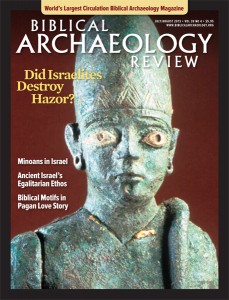Strata: Looted Seal Impressions Authenticated After Quarter Century
In October 1975 a hoard of bullae (seal impressions) began trickling onto the Jerusalem antiquities market. Ultimately, the hoard included more than 250 bullae. In 1986 Nahman Avigad, one of Israel’s most prominent and highly respected archaeologists and epigraphers, published these obviously looted bullae.1
Many archaeologists, especially those who are themselves excavating, are vehemently opposed to publishing unprovenanced objects that come from the antiquities market. We don’t know where they come from; they were probably looted. Such publications, they say, are “corrosive”; the trade in antiquities only encourages looting. Scholars (like Avigad) who publish unprovenanced objects are “not blameless” for the resultant looting.a
How can we be certain that unprovenanced objects are authentic and not forgeries? The most prominent forgery sleuth in Israel, Professor Yuval Goren of Tel Aviv University, has already declared one of the bullae in Avigad’s book to be a forgery.2
Recent research, however, has demonstrated that, as a group, Avigad’s hoard is authentic.
Mitka Ratzaby Golub of the Hebrew University studied the 156 names on the bullae in this hoard and compared them with 46 names found on bullae professionally excavated in Jerusalem.3
Already a library member? Log in here.
Institution user? Log in with your IP address.

